Introduction
Starting your sewing journey can feel like stepping into a whole new world. You’ve just unpacked your shiny new sewing machine, but now what? How do you turn that intimidating piece of equipment into your trusty creative companion? Before diving into your first project, there are a few things you need to know to set yourself up for success. In this guide, we’ll cover all the essentials—from understanding your sewing machine to mastering basic techniques. Whether you’re brand new to sewing or need a refresher, these tips will help you navigate the learning curve with confidence.
Familiarizing Yourself with Your Sewing Machine
Understanding the Parts of a Sewing Machine
Before you can sew a single stitch, it’s essential to know the basic parts of your sewing machine. Familiarize yourself with key components like the needle, presser foot, bobbin, and tension dials. Understanding how each part works together will make your sewing experience smoother and less frustrating.
The Importance of the User Manual
Don’t underestimate the value of your sewing machine’s user manual! It’s your go-to resource for setting up, operating, and troubleshooting your machine. Spend some time reading through it before you start. It’ll provide valuable insights specific to your model, helping you avoid common mistakes.
Setting Up Your Sewing Machine for the First Time
Setting up your sewing machine correctly is crucial to your success. This involves plugging in the machine, winding the bobbin, and threading the needle. These tasks may seem daunting at first, but once you get the hang of them, they’ll become second nature. Follow your manual’s instructions carefully to ensure everything is set up correctly.
Essential Sewing Machine Features to Know
Threading the Needle and Bobbin
Threading your sewing machine can be tricky at first, but it’s a fundamental skill you’ll need to master. Start by threading the bobbin and then the needle. Make sure to follow the threading path as outlined in your manual to avoid tangles and jams.
Adjusting Tension and Stitch Length
Understanding how to adjust tension and stitch length is key to achieving even, professional-looking stitches. Incorrect tension can lead to puckered fabric or loose, loopy stitches. Experiment with different settings on scrap fabric until you find the perfect balance for your project.
Using Presser Feet and Attachments
Your sewing machine likely came with a variety of presser feet and attachments. These tools are designed to help you with specific tasks, like sewing zippers or creating buttonholes. Take the time to learn what each one does and practice using them, so you’re ready when a project calls for a specialized foot.
Basic Sewing Techniques for Beginners

Straight Stitching and Seam Finishing
The straight stitch is the foundation of most sewing projects. It’s simple but powerful. Start by practicing straight lines on scrap fabric, and as you gain confidence, try sewing seams. Don’t forget to finish your seams to prevent them from unraveling—techniques like zigzag stitching or using pinking shears are beginner-friendly options.
Backstitching and Locking Your Stitches
One of the most important techniques in sewing is backstitching, which locks your stitches in place. Without it, your seams can easily come undone. Practice this at the beginning and end of every seam to ensure your projects stay intact.
Simple Hemming and Repairs
Hemming is a basic skill every sewist should master. It’s not only essential for garment-making but also handy for repairs. Learning how to hem effectively can save you from expensive alterations down the road and give your projects a polished, professional finish.
Troubleshooting Common Sewing Machine Problems

Thread Jams and Tangles
Thread jams are a common frustration for beginners. If your thread suddenly bunches up or your machine jams, it’s usually a sign of incorrect threading or tension issues. Always rethread your machine and check the bobbin if you encounter this problem.
Skipped Stitches and Uneven Seams
Skipped stitches can be caused by a variety of factors, such as using the wrong needle or having the machine improperly threaded. If your stitches are uneven or skipped, try switching to a new needle or adjusting the tension until the problem is resolved.
Tension Issues and Fabric Puckering
Fabric puckering is often the result of incorrect tension settings. If your fabric is gathering as you sew, try loosening the tension or using a different stitch length. Testing different settings on a scrap piece of fabric can help you pinpoint the issue before you start your project.
Safety Tips for Using a Sewing Machine
Proper Posture and Ergonomics
Sewing might seem like a low-risk activity, but improper posture can lead to discomfort or even injury over time. Make sure you’re seated at a comfortable height, with your machine at a level that allows you to sew without hunching over. This will prevent strain on your neck, shoulders, and back.
Handling Needles and Sharp Objects
Needles, pins, and scissors are essential tools in sewing, but they can be hazardous if not handled carefully. Always keep your sewing area tidy and store sharp objects safely when not in use. Be mindful of your fingers while sewing to avoid accidental pricks.
Electrical Safety and Machine Maintenance
Remember that your sewing machine is an electrical device, and it should be treated with care. Always unplug the machine when not in use, and avoid sewing with wet hands. Regular maintenance, such as cleaning the lint trap and oiling the machine, will keep it running smoothly and safely.
Choosing the Right Sewing Supplies and Tools

Selecting the Right Needles and Threads
The type of needle and thread you use can make or break your sewing project. Different fabrics require different needles, so it’s important to choose the right one for your material. Likewise, using high-quality thread will prevent breakages and ensure smooth stitching.
The Importance of Quality Fabric
Choosing the right fabric is crucial for the success of your project. When starting out, it’s best to work with medium-weight fabrics like cotton, which are easier to manage. Avoid slippery or stretchy fabrics until you gain more confidence in your sewing skills.
Basic Sewing Tools Every Beginner Needs
In addition to your sewing machine, there are a few essential tools that every beginner should have on hand. These include fabric scissors, measuring tape, pins, and a seam ripper. Investing in quality tools will make your sewing experience much more enjoyable.
Building Confidence with Your Sewing Machine
Starting with Simple Projects
Building confidence takes time and practice, so start with simple projects that allow you to master the basics. Items like pillowcases, tote bags, or even scrunchies are perfect beginner projects that will help you get comfortable with your machine.
Practicing on Scraps and Test Fabrics
Don’t dive straight into your final project with expensive fabric. Use scrap fabric or inexpensive materials to practice your stitches, tension settings, and techniques. This allows you to make mistakes without the pressure of ruining your project.
Patience and Persistence Pay Off
Sewing is a skill that requires patience and persistence. Don’t be discouraged by mistakes or setbacks—they’re a natural part of the learning process. Every project, even the ones that don’t turn out perfectly, teaches you something valuable.
Advancing Your Sewing Skills

Learning Decorative Stitches and Techniques
Once you’ve mastered the basics, it’s time to explore the more creative side of sewing. Many sewing machines come with built-in decorative stitches that can add flair to your projects. Experiment with these stitches on scrap fabric before incorporating them into your designs.
Exploring Patterns and Garment Making
If you’re ready to take your sewing to the next level, try working with patterns to create your own garments. Patterns provide a structured way to learn garment construction and give you the confidence to tackle more complex projects.
Mastering Quilting and Embroidery
Quilting and embroidery are two advanced sewing techniques that allow for incredible creative expression. While they require more precision and skill, they’re worth exploring if you’re looking to expand your sewing repertoire.
Conclusion
Sewing can be an incredibly rewarding hobby, but it’s important to start with the right knowledge and tools. By familiarizing yourself with your sewing machine, practicing basic techniques, and staying patient with the learning process, you’ll quickly gain the confidence to tackle a wide range of projects. Remember, every sewist started as a beginner—so take your time, enjoy the process, and soon enough, you’ll be creating beautiful, handmade items with ease.
FAQs
1. How do I prevent thread from tangling when using my sewing machine?
Make sure your machine is threaded correctly and the bobbin is properly inserted. Tension issues can also cause tangling, so check your settings if problems persist.
2. What’s the best fabric for beginners to practice on?
Cotton fabric is an excellent choice for beginners. It’s easy to work with, doesn’t stretch or slip, and comes in a wide variety of colors and patterns.
3. How do I fix skipped stitches on my sewing machine?
Skipped stitches can often be resolved by changing the needle, rethreading the machine, or adjusting the tension. Make sure you’re using the right needle for your fabric.
4. How often should I clean and oil my sewing machine?
Regular maintenance is essential for keeping your machine in good working condition. Clean out the lint trap after every few projects, and oil your machine as recommended by the manufacturer.
5. Can I sew stretchy fabrics on a regular sewing machine?
Yes, but you’ll need to use a stretch stitch or a zigzag stitch to accommodate the fabric’s elasticity. A ballpoint needle is also recommended for sewing stretch fabrics.
Visit our Sewing Machine Shop for the best sewing machine deals.
For more insightful articles, visit our Medium page !

